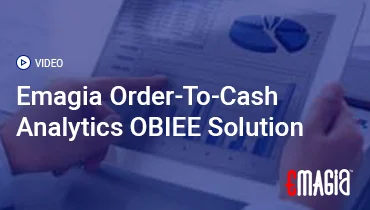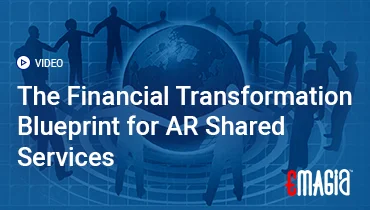Introduction
In today’s fast-paced financial landscape, the ability to seamlessly integrate with multiple credit agencies is paramount for organizations aiming to make informed lending decisions, mitigate risks, and enhance operational efficiency. The “Library of Credit Agency Integrations” serves as a centralized repository, enabling businesses to access, analyze, and act upon credit data from various bureaus effortlessly. This comprehensive guide delves into the intricacies of credit agency integrations, highlighting their significance, benefits, and the transformative impact they have on credit risk management.
Understanding the Library of Credit Agency Integrations
What is the Library of Credit Agency Integrations?
The Library of Credit Agency Integrations refers to a structured collection of pre-built connectors and APIs that facilitate seamless communication between financial institutions and credit bureaus. These integrations enable automated retrieval, processing, and analysis of credit data, streamlining the credit assessment process.
Importance in Modern Credit Risk Management
Incorporating a robust library of credit agency integrations allows organizations to:
- Access real-time credit information from multiple sources
- Enhance the accuracy of credit scoring models
- Reduce manual intervention and associated errors
- Ensure compliance with regulatory standards
- Accelerate decision-making processes
Key Components of Credit Agency Integrations
Automated Credit Report Gathering
Automated systems can fetch credit reports from over 35 agencies, including major players like D&B, Experian, Equifax, and CreditSafe. This automation eliminates the need for manual logins and data retrieval, ensuring timely access to critical information.
Credit Report Data Extraction
Advanced data extraction tools can parse over 100 data points from credit reports, facilitating accurate credit scoring and risk assessment. These tools standardize data from various formats, ensuring consistency across different sources.
Real-Time Risk Monitoring
Integrations can monitor for risk alerts such as mergers, acquisitions, or bankruptcies. Upon detecting such events, automated workflows can trigger credit reviews, enabling proactive risk management.
Benefits of Implementing a Comprehensive Integration Library
Enhanced Decision-Making
Access to diverse and up-to-date credit data empowers organizations to make informed lending decisions, reducing the likelihood of defaults.
Operational Efficiency
Automation reduces the time and resources required for credit assessments, allowing staff to focus on strategic tasks.
Regulatory Compliance
Standardized data handling ensures adherence to regulatory requirements, minimizing the risk of non-compliance penalties.
Scalability
A well-structured integration library can easily accommodate new credit bureaus or data sources, supporting business growth and diversification.
Building and Maintaining the Integration Library
Selecting the Right Credit Bureaus
Organizations should assess their specific needs and choose credit bureaus that align with their target markets and risk profiles.
Developing Standardized APIs
Implementing standardized APIs facilitates seamless communication between systems, reducing integration complexities.
Ensuring Data Security
Robust security protocols must be in place to protect sensitive credit information during transmission and storage.
Regular Updates and Maintenance
Continuous monitoring and updates are essential to accommodate changes in credit bureau systems and data formats.
Challenges and Solutions in Credit Agency Integrations
Data Inconsistencies
Challenge: Variations in data formats and terminologies across different credit bureaus can lead to inconsistencies.
Solution: Implementing data normalization techniques and standardized data models can harmonize disparate data sources.
Integration Complexity
Challenge: Integrating multiple systems with varying protocols can be technically challenging.
Solution: Utilizing middleware platforms or integration hubs can simplify the process by providing a unified interface for all integrations.
Compliance and Regulatory Issues
Challenge: Ensuring compliance with data protection regulations across different jurisdictions can be complex.
Solution: Engaging legal experts and implementing compliance management tools can help navigate regulatory landscapes effectively.
How Emagia Transforms Credit Agency Integrations
Streamlining Credit Data Access
Emagia offers out-of-the-box integrations with over 35 global credit agencies, enabling automated credit report gathering without manual intervention.
Advanced Data Extraction and Analysis
With Emagia’s AI-driven tools, organizations can extract and analyze over 100 data points from credit reports, enhancing the precision of credit scoring models.
Real-Time Risk Monitoring
Emagia’s platform continuously monitors for risk alerts, such as mergers or bankruptcies, and triggers automated workflows for timely credit reviews.
Seamless Integration with Existing Systems
Emagia’s solutions are designed to integrate effortlessly with existing ERP and CRM systems, ensuring a smooth transition and minimal disruption to operations.
Frequently Asked Questions
What is the Library of Credit Agency Integrations?
It is a centralized collection of pre-built connectors and APIs that facilitate seamless integration between financial institutions and multiple credit bureaus, enabling automated credit data retrieval and processing.
How does automated credit report gathering work?
Automated systems fetch credit reports from various bureaus without manual intervention, ensuring timely and efficient access to credit data.
What are the benefits of real-time risk monitoring?
Real-time monitoring allows organizations to detect and respond promptly to risk events such as bankruptcies or mergers, mitigating potential financial losses.
How does Emagia enhance credit agency integrations?
Emagia provides out-of-the-box integrations with numerous credit bureaus, advanced data extraction tools, real-time risk monitoring, and seamless integration with existing systems, streamlining the entire credit assessment process.
Conclusion
The Library of Credit Agency Integrations is a vital component in modern credit risk management, offering organizations the tools to access, analyze, and act upon credit data efficiently. By leveraging advanced integration solutions like those offered by Emagia, businesses can enhance decision-making, ensure compliance, and drive operational excellence in their credit processes.



